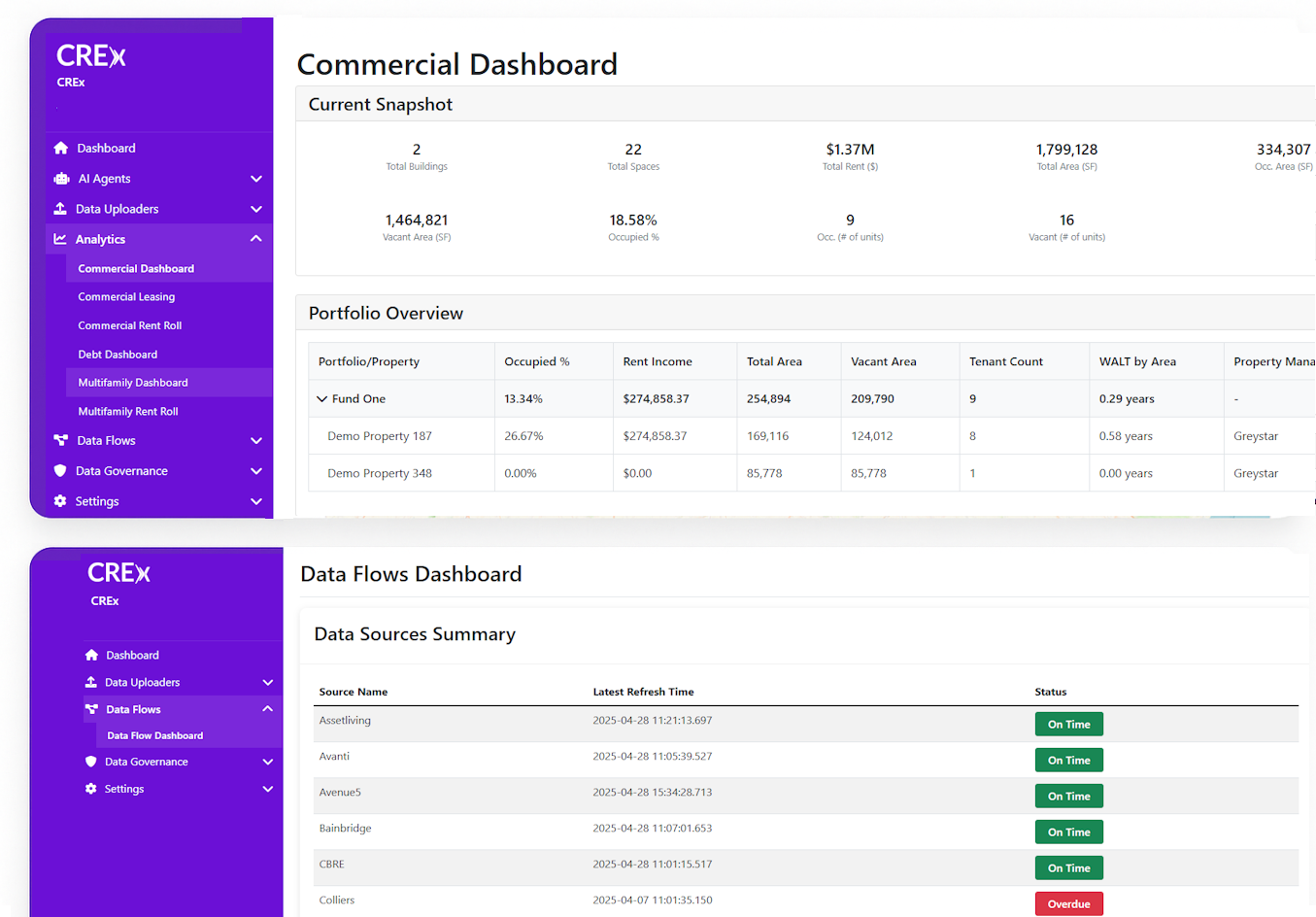Slash Operations Time 50% for Institutional CRE Owners
Transform your real estate asset management with AI-powered insights and analytics
Whether you manage 10 properties or 1000+,
our scalable solutions drive efficiency and growth.

CREx Performance Statistics
Trusted By Industry Leaders
Comprehensive Solutions and Services
Integrated solutions for every stage of the real estate asset lifecycle
CREx OS
Our flagship operating system that integrates all aspects of real estate asset management into one powerful, intuitive platform.
Explore CREx OS PlatformData Warehouse and Analytics
Streamline operations, automate workflows, and enhance decision-making with our comprehensive data analytics platform.
Discover Data Analytics SolutionsAI Agents and Strategy
Leverage machine learning algorithms to predict market trends, optimize pricing strategies, and identify investment opportunities.
View AI-Powered SolutionsInvestor Reporting
Deliver comprehensive, timely, and insightful reports to your investors with automated distribution and customizable templates.
See Investor Reporting ToolsThird Party Property Manager Integration
Seamlessly connect with external property management systems to consolidate data and streamline operations across your entire portfolio.
View Property Manager IntegrationsAdvisory and Strategy
Expert guidance and strategic consulting to optimize your real estate investments and portfolio performance through data-driven insights.
Learn About Advisory ServicesReady to Optimize Your Portfolio?
Discover how CREx's AI-driven platform can enhance your real estate asset management performance. Schedule a personalized demo today.
What Our Clients Say
Trusted by leading real estate firms across the country
"Franklin Street has been looking to analyze our data for many years. But none of our past initiatives gave us the insight, ease of use, and flexibility that we achieved by partnering with CREx."
"CREx has helped our teams at Thrive visualize vast residential and financial datasets in a way that is both pleasant and actionable. It has helped us make informed business decisions from the individual property level spanning to the entire portfolio. By integrating with several key data sources that impact our portfolio, we were able to begin gathering real-time, consolidated insight while eliminating manual processes."
"I cannot recommend the CREx team and software enough! They have been an absolute pleasure to work with and have exceeded our expectations. The setup process was lightning-fast, and their deep understanding of the real estate industry has been instrumental in helping us increase our efficiency. The CREx team and software are truly a game-changer, and we are grateful to have them as partners."
Powerful Asset Management at Your Fingertips
Our intuitive platform provides comprehensive control and visibility across your entire real estate portfolio.
- Real-time performance dashboards
- AI-powered forecasting and scenario planning
- Automated investor reporting
- Mobile access for on-the-go management




